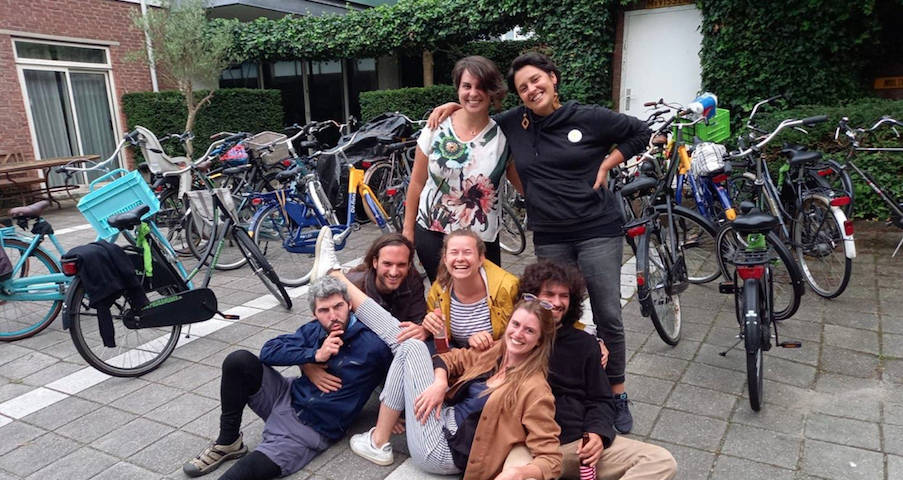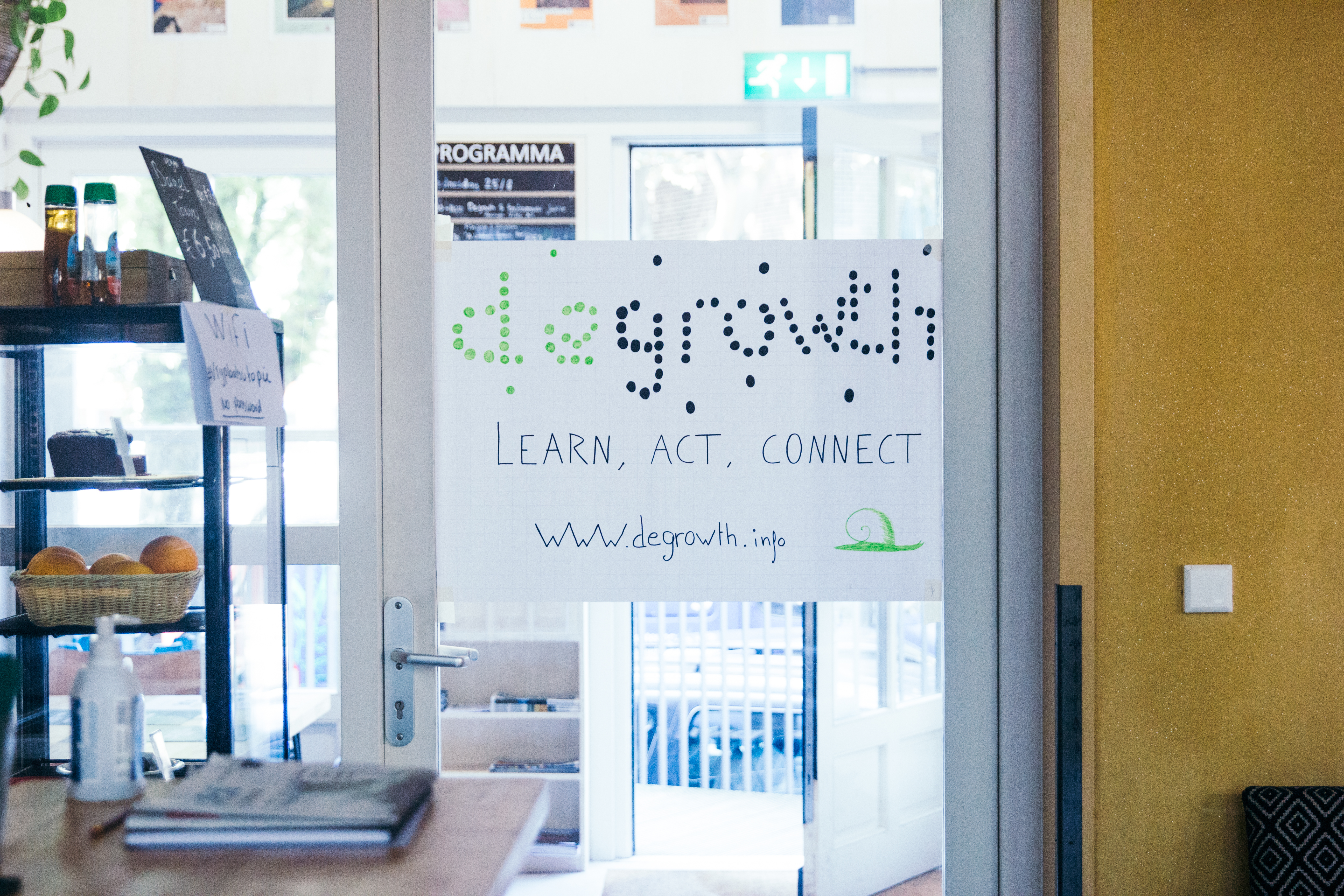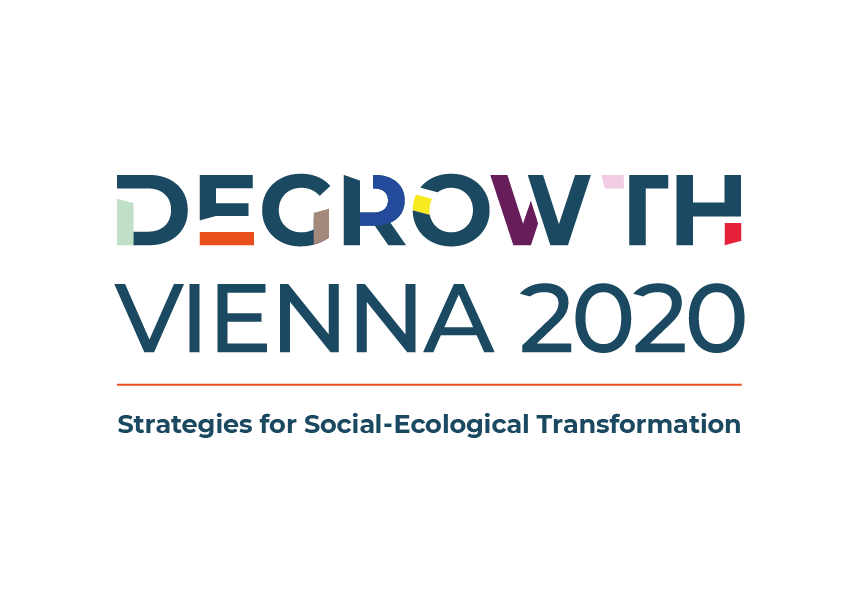This is part two of a piece reflecting on the Vienna degrowth conference and considering how to move forward based on the inputs and insights from the conference. You can read part one (focused on the conference) here.
The idea of organizing the Degrowth Vienna 2020 conference was at least in part connected to a piece that some conference organizers published in this blog in which they criticized the so-called “strategic indeterminism”, that is an excessive openness and pluralism in degrowth strategies, and a neglect of spaces for reflection or debate around reconciling these myriad strategies. While I agree that these spaces were lacking, I think that after this conference we can confirm that this multiplicity of degrowth strategies is irreducible. We should not attempt to reduce plurality or to value some strategies more than others on a general level, irrespectively of contextual conditions. What is needed – and this has just started – is to deepen both the knowledge and the practice of each of these strategies, with sensitivity to the specificity of contexts, and to the different actors.
From my research experience in studying social movements I can indeed say that some of the strongest transformative innovations I have encountered are those where a diversity of ideological positions were included into a “common view” of what had to be changed - the common vision is certainly important, and degrowth should not be in favor of a “big tent” that demystifies the meaning of degrowth. In one of these transformative innovations that I investigated, called Can Batlló in Barcelona, there was a “division of labor” of activism. For example, the anarchists and autonomous activists were not negotiating with the state authorities, but left this task to other movement actors that did not reject engagement with the state. What mattered was the common, collective project, and the very fact that it needed to lead to substantive changes in the neighborhood and city. This is intimately connected also with the necessity of an intersectional struggle and composition, able to include feminist concerns over social reproduction priorities, with decolonial, just transition concerns, migrants’ rights, etc.
But how do we define strategy? Social movement scholars have defined it as a plan of collective action intended to accomplish goals within a particular context. Strategy, therefore, entails defining, interpreting, communicating, and implementing a plan of collective action that is believed to be a promising way to achieve a desired alternative future in light of circumstances. However, this is a multi-level process, as plans of action, contexts, and goals can be distinguished based on the level of social aggregation (micro, meso or macro), type of institution, geographic scope, duration (short-term or long-term), cultural and structural characteristics, and multiple strategies can be in place in the same movement. I will differentiate between two main forms of strategies, an internal one related to the movement-building, and an external one - the two dimensions are of course connected.
Some strategies which were discussed or at least mentioned at the Vienna conference are particularly important.
With regards to internal forms of strategy, the importance of improving our own internal organization through improved network coordination of the different degrowth groups was posed for example by
Andro Rilović and
Ulrich Brand. The former for example proposed the setting up of coordinated spaces, meeting on a regular basis for reflection and exchange of information on our own struggles, activities, and obstacles encountered – a proposed ‘Degrowth International’. As mentioned by several people, ‘organization’ does not necessarily need to mean formalized organizations or hierarchy - it could very well be a horizontal and informal networking of active groups, albeit in a clear and structured way. Potentially, the network could also try to reach out and involve other degrowth groups at local and national levels which have up to now been less internationally visible.
Relating to external forms of strategies, I think it is essential to mention the cultural and dissemination work of degrowth through both alternative and mainstream media, in order to have an impact on public opinion. This is a fundamental aspect that cannot be understated. It does not only relate to the discourse on degrowth on an abstract level – where the degrowth movement has been achieving important outcomes - but also on the concrete struggles such as socio-environmental conflicts against big, fossil infrastructure projects where we can exert some meaningful influence, providing the overarching vision to activist struggles that is sometimes missing. For example, in a work in progress on the NOTAP movement in the South of Italy against the TAP gas pipeline, which Paola Laini and myself presented at the conference, we found that the movement’s outcome was hindered both by the absence of a more radical critique of development and of a credible development alternative in its discourse, and by the actual lack of real freedom of press. This translated into the media´s uncritical acceptance and legitimation of the discourses produced by institutional and corporate actors.
Furthermore, in the current corona context, I think the degrowth movement should seize the opportunity provided by this
crisis to more clearly denounce how, on the one hand, this pandemic is tightly linked to the destruction and exploitation of natural habitats, but also that it is affecting different socioeconomic strata differently. A
recent Harvard analysis showed a statistical link between COVID-19 deaths and other diseases associated with long-term exposure to fine particulate matter, unveiling (once again) that communities of color are disproportionately impacted by air pollutants. This puts to the fore once more the issue of environmental (in)justice. Furthermore,
Rob Wallace and others have argued how the agro-food system is intimately linked with the spread of “big viruses”, while other
studies conducted in Italy show that particulate matter can also transport the virus, meaning that the virus could be strengthened by high levels of pollutions.
As discussed in this conference, as well as in the degrowth
open letter, the coronavirus has acted as a constrain for social mobilization but has also led to unprecedented government actions, demonstrating what is possible when there is a will to act, and disclosing that “essential” economic services are often those related to social reproduction. On the other hand, I think it has destabilized some subjectivities and common senses to think about one’s work, self-questioning excessive working time and consumption levels, and the social acceleration of our lives.
Partly related to the cultural strategies, so-called interstitial transformations are certainly another important strategy. Not only are they really valuable in and of themselves, but they are paramount for a degrowth transformation because they allow to further develop activists’
radical imaginaries, and to build and embody other forms of life and alternative futures. In other words, these initiatives pose the question of a different ontological politics, as also
Margara Millan reminded at the conference – this is important because we cannot just affirmatively aim at downscaling, we need a different
ontological politics and alternative value practices that allow prefeguring a different society. What we need to develop more is how symbiotic types of transformation, that is the radical reforms, can be nourished by interstitial transformations through forms of
knowledge co-production between movement and state actors, starting from the local level.
What about these non-reformist reforms?
Stefania Barca reminded us of the importance of having a plan ready and this proved indeed important for the rise of neoliberalism, as David Harvey explained. Some important policies that have been mentioned at the conference are selective deglobalization, decommodification of main economic sectors, and stopping the expansionary, growth- and profit-oriented logics existent in various sectors: from food where the Common Agricultural Policy privileges big agribusiness, to housing where we should stop building new housing stock but rather occupy the empty housing stock, and provide affordable, high-quality food and housing to all.
But how can this be achieved? This clearly requires putting public ownership at the center. With public ownership here I follow the conception of people such as
Andrew Cumbers as encompassing all those attempts, both outside and through the state, that reclaim economic space from capitalist social relations, or else all collective ownership subject to collective forms of decision-making, including commons. As several panelists such as
Andreas Novy,
Tone Smith,
Nilda Inkermann, and Frank Adler rightly warned us, we need changes in people’s conditions of everyday life, alternative modes of satisfying needs, shifting to a socio-ecological infrastructure that is sustainable and affordable for all, centered upon the decommodification of social provisioning, from housing to health, food, and energy – that is, of all the sectors that are associated with basic needs.
Also,
Barbara Sennholz-Weinhard from Oxfam reminded us in this conference that given the high level of wealth concentration, income redistribution will not be enough, property and ownership questions are key for a degrowth transformation, including in production. This means that setting up a maximum income together with a basic income – normally advocated in the degrowth literature - will not suffice, and we should also talk about property and wealth. On the other hand, we should also think about the way democratic forms of ownership that are more attentive to the social and environmental aspects of economic activity, can be fostered through the strengthening of social and solidarity economy.
One important non-reformist reform that has only been mentioned but I think needs more profound treatment is the democratization of the state and the transformation of at least some public institutions into institutions of the commons - as
Pierre Dardot and Christian Laval have explained - including academia, which obeys commodification and productivist logics. I think this is at least in part linked to what
Miriam Lang referred to when she talked about institutionalization from below, and which could provide a new meaning to the “ruptural” strategy of E.O. Wright, i.e. the “Leninist” strategy of taking state power. While I completely agree with the argument by Miriam Lang on the challenge of keeping movement’s struggles alive once social movements go to the governmental level, I think we should not completely abandon the ruptural strategy of taking state power. Rather than eschewing dealing with it, I think we should revise it and give it a new meaning, by ensuring that it can encompass a democratization of the state, which can itself only occur with the strength of social mobilisation and movements.
I would like to end this piece with a central question that I think needs much more discussion and research in degrowth: how to bring about those radical reforms? What are the social and political processes that allow these non-reformist reforms to be brought forward? How can we make different radical imaginaries hegemonic, so that degrowth policies can be accepted by vast sections of the population? How can we do this despite the fact that it will go against entrenched and vested interests with the power to influence the current common senses (in Gramscian terms) – the hegemonic ways of living and understanding the world? I think far more debate between activists, practitioners, and researchers is needed on these topics.
This piece is based on the text of my own contribution to the closing plenary of the Degrowth Vienna conference. I thank the conference organizers for inviting me, and the moderator and other participants of the session: Christian Kerschner, Nina Treu, Tonny Nowshin, and Halliki Kreinin. I also thank Nathan Barlow and the degrowth.info team for having invited me to contribute to this blog.


